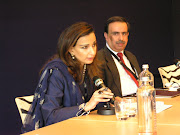
ALMOST every crisis in
For
Based on this understanding,
SECOND, the Centre must appoint an expert committee to consider, afresh, the recommendations made by the Prime Minister’s working groups on governance, confidence building measures ( CBMs) — both internal and those across the Line of Control ( LoC) — economic reconstruction and Centre-state relations. Several key recommendations, particularly those given by the working group on internal CBMs (chaired by Hamid Ansari) have either not been implemented or have been taken up half- heartedly. Their effective implementation would be a trust- building measure of great significance. Unfortunately, the report of the working group on Centre-state relations has led to discord rather than furthering an understanding.
Another urgent necessity is an empowered task force of experts that examines the report and its detailed annexures, consults with stakeholders and arrives at a consensus that would, more or less, satisfy most shades of opinion.
Third, the government must reach out to the angry youth, especially the unemployed, through all the resources that
The challenge for the Omar Abdullah government is even greater. This is unlikely to be the only crisis that the CM will face in his political career, but it is easily his worst so far.
The credibility of his government, the party and of his chief ministership has been severely dented. There are no magical mantras for gaining popularity, but acting on the following three fronts will go a long way in reestablishing his authority.
FIRST, FIX blame and take action. The impression that there is administrative anarchy must be corrected. The government must “mean business” and must be seen as taking action against those responsible for the present crisis. This is not to recommend finding scapegoats. But it is essential for some officials to be punished if the faith of the people has to be restored in the system and if the bureaucrats are to take the political leadership seriously.
Second, reach out to everyone. A politician is one who only thinks of the next election; a statesman is one who thinks of the next generation. Bury the past, forget the bitterness of yesterday, and try and create a new way in politics. Meet young people, as many as you can, every day. And call on your political opponents (drop by at
Generosity in politics will never be seen as a weakness. Political leaders who demonstrate humility in crisis always emerge stronger at the end of the day. Form a Council of Elders, drawing on the great strength of the state’s civil society, and meet them regularly taking their counsel and support.
Finally, prevent violence and killings. This is easier said than done. But let the police understand that there will be costs if there are any fatalities, and take immediate action when there is even a reported abuse of authority. Strengthen the human rights commission, give it greater authority and let it become a credible institution in the eyes of the people.
This is an agenda for just a month; much more will need to be done if








